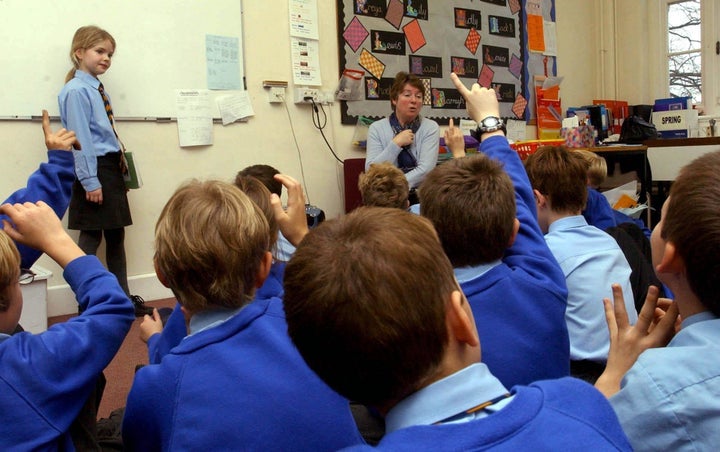
We are in the midst of a slow, but insistent shift in how we teach, assess, and organize our classrooms. After centuries of fixating on the solitary student's singular progress, we are currently experiencing the rise of a radical emphasis on collaborative, team-based learning. This is not just a slight course correction but has the potential to be a major shift of paradigm. This transformation poses profound challenges to the basic tenets of our educational system while it also forces teachers and administrators to invent new and novel ways to assess student progress and organize their curricula.
What is causing this new trajectory? There are three factors that I will focus on -- social intelligence, wicked problems, and network culture -- though undoubtedly many others factor into a change as dramatic as this one. The first factor, an emphasis on social intelligence, is a reaction to the proliferation of standardized tests and assessment. No educator worth her salts believes that these draconic abstractions of knowledge can even begin to illuminate a student's potential. The obsessive, severe emphasis on individual learning has cast a light, ironically, on how much we miss when we assess student progress by such individualistic measures. Second, since at least the nineteen sixties, we have come to recognize that the great challenges of our era are mind-bogglingly complex and global in scale. If we are even going to pretend to address problems like global wealth inequality, climate change, or obesity, we are going to need teams of experts from complementary fields working together with almost frictionless effectiveness. We can no longer afford to wait for an Einstein to help us. Working effectively in groups and across disciplinary boundaries will be a key survival skill in the 21st century. And finally, communication technologies connect us together across time and space in ways that we are only beginning to understand, and with the power to disrupt our notions of what is possible. Always on, social and collaborative media are proliferating, catalyzing cross-disciplinary and cross-cultural opportunities to work together. Wikipedia, and other wiki-style formats, has redefined the possibilities of co-production. In this fluid environment, collaboration is no longer the exception, and its manifold benefits are becoming self-evident.
For educators, increasing collaborative learning opportunities presents stark challenges to the way we teach. Nowhere is this more apparent than in assessment and evaluation. We are accustomed to evaluating an individual student's work in light of her peers, past and present. But when work and outcomes are shared -- and shared in polymorphous and untrackable ways -- it becomes nearly impossible to determine whether success (or failure) is due to one particular member or another, or to the group dynamics. In addition to traditional evaluation criteria, we will need to develop flexible, fine-tuned mechanisms that incorporate peer assessment, group dynamics, and self-assessment. Furthermore, we cannot just throw students together in groups and expect them to figure out how best to make it work; we must teach collaboration as a core competency. This necessitates keen attention to the diverse characteristics of working together, including interpersonal dynamics, role definition, leadership modes, the forms of collaboration (from two person partnerships all the way to crowd sourcing), and proper project documentation.
Collaborative creation and production is not new, and many disciplines already practice it: from multi-author scientific publishing and legal teams to project-based design curricula and theatrical productions. But most of these disciplines still teach to the individual student, and ignore the intricacies and subtle possibilities of group dynamics. What is exciting is to imagine the migration of collaborative teaching into fields such as legal studies, medicine, or the humanities. What will a collaborative mathematics or anthropology dissertation look like? Or even better, a collaborative thesis between a mathematician and an anthropologist. Or how surprising and insightful might a wiki-essay on Rita Dove's poetry be? We are still only sensing the dim outlines of what is possible.
Big leaps in scholarship, discovery, and innovation will mostly come from diverse perspectives working together. At its very best, collaboration results in the sum being greater than its parts (1+1+1=4). Without proper support, dysfunctional collaboration can undercut the potential of each individual to succeed (1+1+1=2). If we hope to address the complex challenges of our generation, we will need to pull together. To do that, we must shift our focus from individual achievement to group excellence, and in the process radically reconfigure our educational culture and environment.